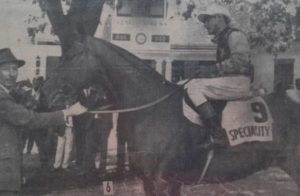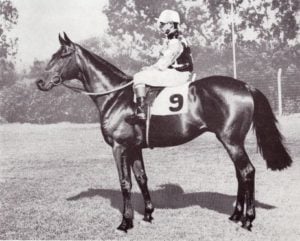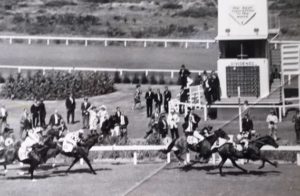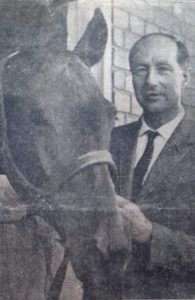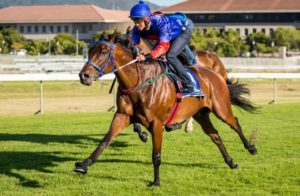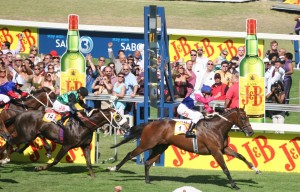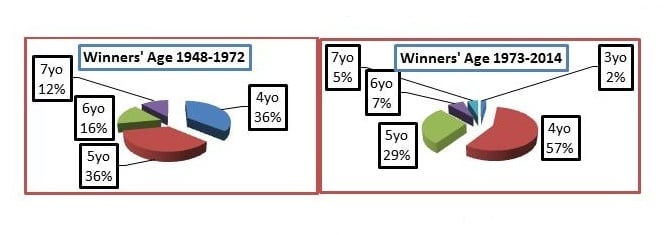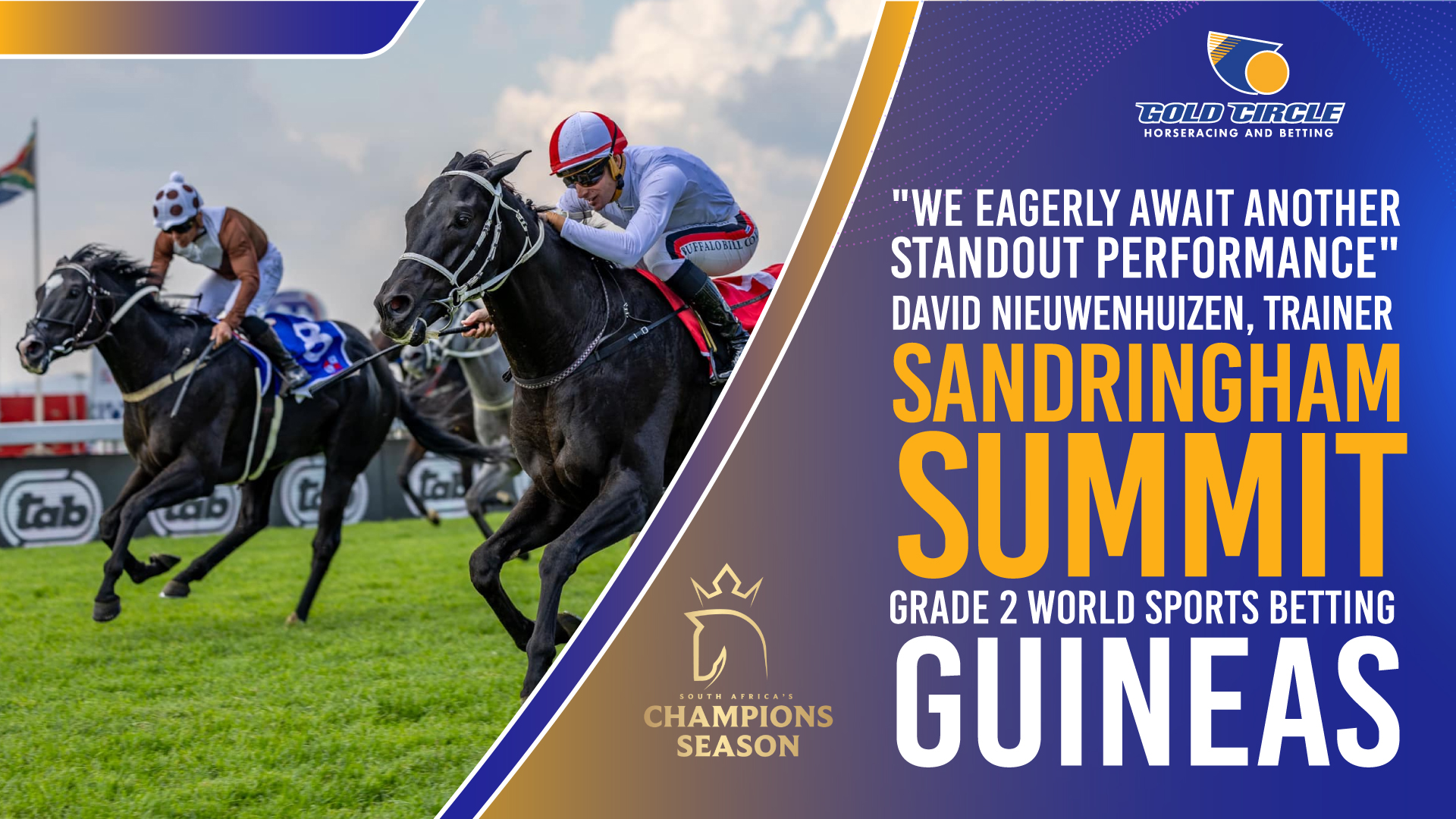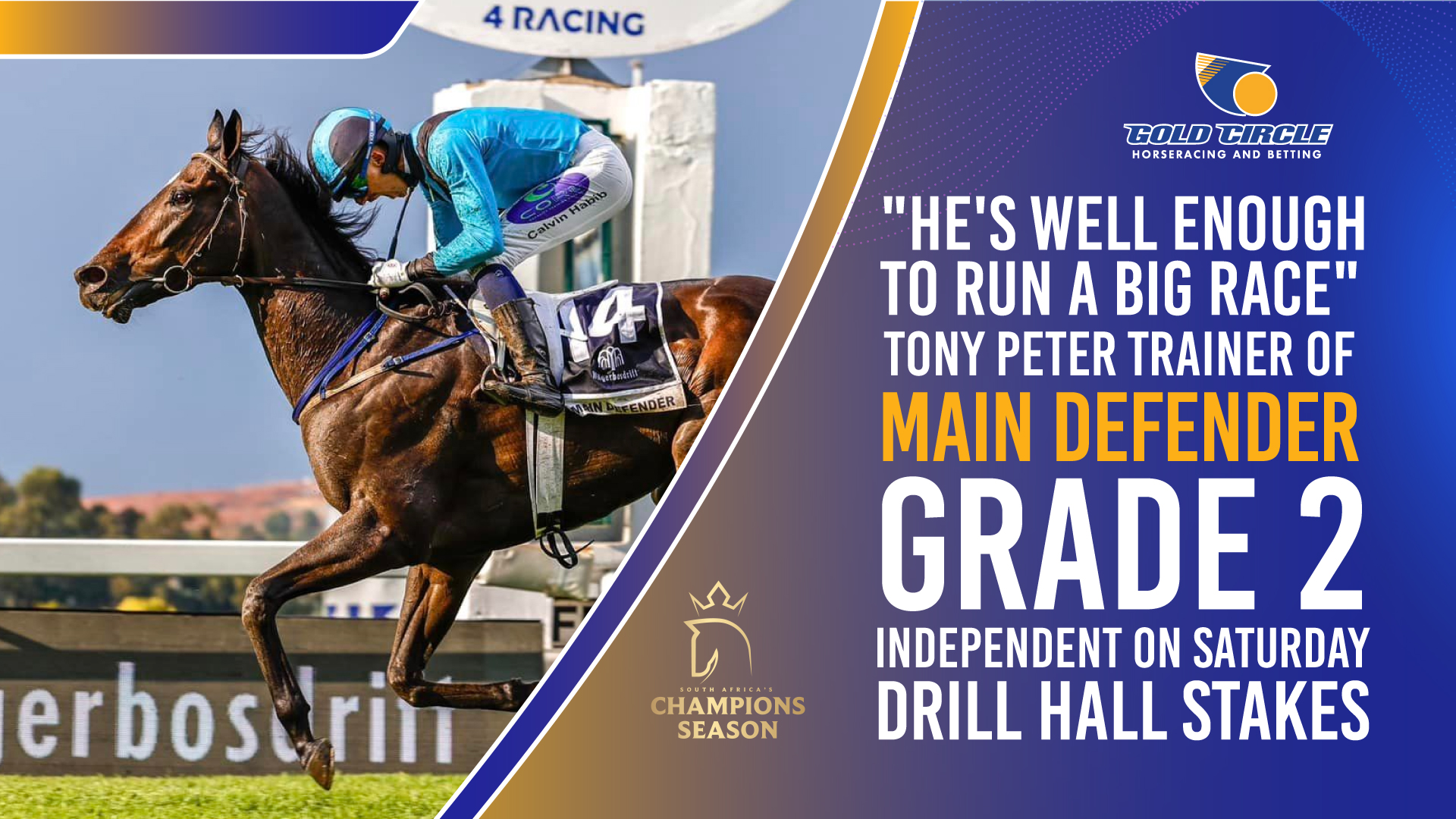Sean Tarry said of his seven-year-old Gold Onyx: “for those people suggesting my horse is too old, be careful”. He has a point. Do you know that the 2015 J&B Met is an anniversary and a golden one at that? writes Malcolm Draper.
It should be a Jubilee as it is 50 years since Speciality overcame a deep draw of 18 and burst from near the tail to paralyze the field at the finish. Trained by the late great Basil (JBK) Cooper and ridden by Domingo de Allende, the seven-year-old got the best part of a length past Allysum at the post. He opened at 20-1, but returned R31 for every rand his fans invested in him. I am sure Basil got more as he had backed his horse well before his good prep race over six furlongs which brought his price down.
Basil told the press that justice had been served since, after winning the Gold Cup in 1962, Speciality had run close seconds in the July, the Queen’s Plate and the Met in which he ran 5th 2 ½ lengths behind The Giant in 1964. It was as one paper put it, “Third Time Lucky”. Another headline read “Lucky no. 9 Storms to Win.” Basil said his hopes got a spurt since Jerez and Numeral’s defection, which meant that Speciality could change his no. 11 saddle cloth for the lucky no. 9, worn for the first time since his Gold Cup win.
Gold Circle sponsored a research trip for me to interview Basil’s son Dan who kindly dug out his father’s albums and scrapbooks when I visited him in the Cape before last year’s Met. The picture of the finish in the papers shows Dan, at ten-years-old, running alongside the rail shouting Speciality home.
Dan told me that towing his horse to the meeting had dashed Basil’s hopes since the traffic lights were green all the way. I would have thought that was a good sign for a superstitious Irishman, but not so. When luck came his way it was a result of his perfectionist hard work, rather than irrational beliefs. I can testify to this from having worked at his side in his yard and stayed in his house 30 years ago. Basil was from the old school and had no interest in expensive blood tests and scientific diets. He rolled his own oats and mixed his own feed, working out what his horses needed by feel. He spoke fondly of Speciality who he said nickered to him in recognition when he arrived to meet him for a raid in a distant city. When Basil was towing him, the horse would let him know when he thought Basil was driving badly by kicking the float.
Unsung hero
Newspaper clippings of that era revealed the high regard that Basil was held in as a trainer. A 1964 article said that “he wins more than his fair share with a small string . . . many good judges believe that he and Fred Rickaby are the two best trainers in the country today”. Speciality’s Met win was the pinnacle of Basil’s career in which the coveted July Handicap had been tantalizingly elusive. Upon his retirement to stud in 1967, Daily News racing scribe Grimcrack (what a name!), called Speciality “one of the greatest race horses ever to be bred in South Africa . . . he could sprint and stay and had an excellent feature race record . . . after his finest hour [winning the Met] the “old man” was not finished yet. At eight he won the Kenilworth Handicap over five furlongs to round off a wonderful career. Nothing worried this horse, he was at home on any track and won at Pietermaritzburg, Durban, Johannesburg and, of course, at his home tracks in Cape Town.”
In Basil’s albums we found a cherished telegram saying “Congratulations on a great win with the old horse. Regards, Ted Birch”, who bred Speciality . Another addressed to “Mr and Mrs Cooper” saying “Many congratulations on your wonderful day on Saturday we were very thrilled for you. Love, Bridget and Harry”. Speciality was Cooper-owned, but still the sporting Oppenheimers clearly felt the Coopers’ delight. As owners of Horse Chestnut they shared what Mike De Kock recalls as “the most exciting day of my life” when their horse won the J&B Met in 1999. De Kock also recalls Sporting Post’s “brilliantly inventive” pre-Met headline – ‘Born to Conker’ – which turned out to be prescient. As much as we might knock punners’ wit, some punters appreciate a little light-hearted guidance. Unlike Speciality, Horse Chestnut did not have a smooth ride to the Met. He encountered traffic congestion and De Kock and his private security had to resort to imitating police officers as well as using some strong language. This and a box injury on arrival nearly drove De Kock to strong drink, but that was enjoyed after Horse Chestnut’s masterful win.
It is with that recent history in mind that so many fans want Louis the King, the only Triple Crown winner since Horse Chestnut, to take the J&B Met. But with Speciality’s half-century taken into account, it would be fitting that the 7yo Gold Onyx wins this year. He is drawn in the bush at fourteen (7×2 if you believe in numerology). I will take, by necessity, a small sentimental wager that he wins, since gold matches J&B, the oldest race sponsor in South Africa (38 years), and the old campaigner has been in the finish in top features. It is not too improbable – in 2013, the seven-year-old horse Martial Eagle turned up the books from a deep draw and dashed doubts about his ability to stay beyond a mile.
Met history
The Cape Metropolitan is the oldest handicap type race in South Africa, first run in 1876 over 1½ miles at the South African Turf Club’s Green Point Common headquarters at Cape Town. In 1882 the race was moved to the club’s new Kenilworth facility. After the turn of the century it was mostly run over 1800 meters. Since 1948 it has been run over ten furlongs (2000 meters). Originally it was a spring race on the last Saturday in October, but since 1947 it has been run in late January. Prior to then, two-year-olds could win while three-year-olds dominated, but the only one to win since was Badger’s Coast in 2000. There is no chance that a three-year-old can win the race this year since there are none entered. Nor can a female win it since Jet Belle absconded to the Klawervlei Majorca Stakes on the same day.
Since 1973, was the Met was no longer run as a handicap but as a conditions race (weight-for-age plus penalties). The handicappers couldn’t hold Pocket Power back since he won it as a four, five and six-year-old in 2007, 8 & 9. Still the statistics will tell you that things are tougher for older horses since Speciality’s era with four-year-olds’ share of the winnings rising most significantly.
So, in light of the above, do temper your quixotic wager on deeply drawn old gold with the iron law of probability. Sean Tarry won the July with Heavy Metal in 2013, but he was in the same age bracket as the majority of Met winners.
Whatever the result this year, for racing to be a winner, this is an opportunity to celebrate more than the horse that sired the Maltster (who gave Lester Piggott his greatest race at Scottsville in 1975). That is another story, which I have told elsewhere. The Cooper legacy is much greater than this and deserves to be better appreciated. Basil’s brother, the late Tom Cooper, started the Irish Bloodstock agency and teamed up with Vincent and his younger brother Phonsie O’Brien, who recalls that their objective was to shift the balance of power in the industry from America to Europe or Ireland. From humble beginnings and possessing little but a deep love of horses, they succeeded in making Ireland a force to be reckoned with. We have them to thank for both the Sadler’s Wells and Northern Guest influence on our bloodstock.
Last year Dan told me that the Irish Cooper family was in the Cape around the time of the Met including “Tom’s wife Valerie, now 85 and as spry as a cricket – I think she is a steward of the Irish Turf Club.” All their surviving children are involved in the industry including Patrick (BBA Ireland), Alan (Niarchos) and Diana (Sheik Mohammed’s Godolphin operation). My idea was that if the Coopers were over again this year they could have been celebrated as guests of honour at the Met, but it was not to be. They come every other year, so watch this space.
Ed – special thanks to the Cooper family for the use of the photographs from their private collection


